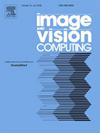基于多模态混合专家协同的组合图像检索
IF 4.2
3区 计算机科学
Q2 COMPUTER SCIENCE, ARTIFICIAL INTELLIGENCE
引用次数: 0
摘要
合成图像检索(CIR)在安全监控、电子商务和社会媒体分析中是必不可少的。为各行业提供精准的信息检索和智能分析解决方案。大多数现有的CIR模型从参考图像创建一个伪词标记,随后将其合并到图像检索任务的相应标题中。然而,当目标图像需要对参考图像进行复杂的修改时,例如对象删除和属性更改,这些基于伪词的提示方法受到限制。为了解决这个问题,我们提出了一个多模态混合专家协同(MMES)模型来实现有效的组合图像检索。MMES模型最初通过混合专家单元利用多个混合专家(MoE)模块处理各种类型的多模态输入数据。随后,这些专家模型的输出通过跨模态集成模块进行融合。此外,融合的特征生成隐式文本嵌入提示,这些提示与相关描述相连接。最后,使用文本编码器和图像编码器进行检索。实验表明,该方法在CIRR和Fashion-IQ数据集上优于当前的CIR方法。本文章由计算机程序翻译,如有差异,请以英文原文为准。
Composed image retrieval by Multimodal Mixture-of-Expert Synergy
Composed image retrieval (CIR) is essential in security surveillance, e-commerce, and social media analysis. It provides precise information retrieval and intelligent analysis solutions for various industries. The majority of existing CIR models create a pseudo-word token from the reference image, which is subsequently incorporated into the corresponding caption for the image retrieval task. However, these pseudo-word-based prompting approaches are limited when the target image entails complex modifications to the reference image, such as object removal and attribute changes. To address the issue, we propose a Multimodal Mixture-of-Expert Synergy (MMES) model to achieve effective composed image retrieval. The MMES model initially utilizes multiple Mixture of Expert (MoE) modules through the mixture expert unit to process various types of multimodal input data. Subsequently, the outputs from these expert models are fused through the cross-modal integration module. Furthermore, the fused features generate implicit text embedding prompts, which are concatenated with the relative descriptions. Finally, retrieval is conducted using a text encoder and an image encoder. The Experiments demonstrate that the proposed method outperforms state-of-the-art CIR methods on the CIRR and Fashion-IQ datasets.
求助全文
通过发布文献求助,成功后即可免费获取论文全文。
去求助
来源期刊

Image and Vision Computing
工程技术-工程:电子与电气
CiteScore
8.50
自引率
8.50%
发文量
143
审稿时长
7.8 months
期刊介绍:
Image and Vision Computing has as a primary aim the provision of an effective medium of interchange for the results of high quality theoretical and applied research fundamental to all aspects of image interpretation and computer vision. The journal publishes work that proposes new image interpretation and computer vision methodology or addresses the application of such methods to real world scenes. It seeks to strengthen a deeper understanding in the discipline by encouraging the quantitative comparison and performance evaluation of the proposed methodology. The coverage includes: image interpretation, scene modelling, object recognition and tracking, shape analysis, monitoring and surveillance, active vision and robotic systems, SLAM, biologically-inspired computer vision, motion analysis, stereo vision, document image understanding, character and handwritten text recognition, face and gesture recognition, biometrics, vision-based human-computer interaction, human activity and behavior understanding, data fusion from multiple sensor inputs, image databases.
 求助内容:
求助内容: 应助结果提醒方式:
应助结果提醒方式:


